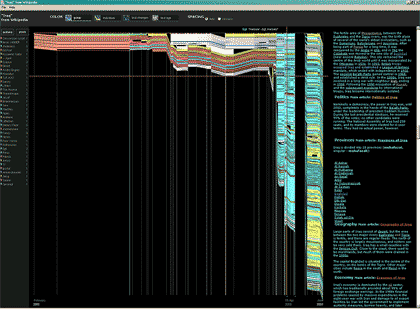
Adaptability has always been a distinctive feature of human intelligence, but as MoMA's new exhibition "Design and the Elastic Mind" claims, recent developments in science call for faster -- and, indeed, more elastic -- modes of social response. Beginning with a display on nanostructures and concluding with one about social and global networks, this ambitious exhibition examines the various scales on which our contemporary lives are led, and the way design can translate technological innovation into objects of everyday use. Aranda/Lasch's Rules of Six (2007), for example, foregrounds nanodesign's potential for self-assembly with a wall relief and images of nanostructures. Developed through simple rules and interactions, these structures offer provisional cases for the role such generative, modular organization may hold in the realms of architecture and design. On the human scale, Emili Padros for the emiliana design studio's NSS: Non-Stop Shoes (1999) is one of many projects to consider micro-solutions to energy conservation: high-top sneakers that store energy over their use to power lightbulbs and small, domestic appliances. Experiments on the social scale frequently focus on the interaction of individual users with a larger (often virtual) public, as with I Want You To Want Me (2007-ongoing), Jonathan Harris and Sep Kamvar's condensation of internet dating networks into an interactive, flatscreen display, and Fernanda Bertini Viegas, Martin Wattenberg and IBM Thomas J. Watson Research Center's History Flow (2003), which visualizes user-generated revisions to Wikipedia topics. As Senior Curator Paola Antonelli points out in an essay accompanying the exhibition, the ability of virtual users to "break the temporal rhythms imposed by society in order to customize and personalize them" is one of the many ways that we are tackling technological novelty with a spirit of agency and play. - Tyler Coburn
Image: Fernanda Bertini Viegas, Martin Wattenberg and IBM Thomas J. Watson Research Center, "Iraq on Wikipedia - spaced out by time" excerpt from History Flow, 2003

